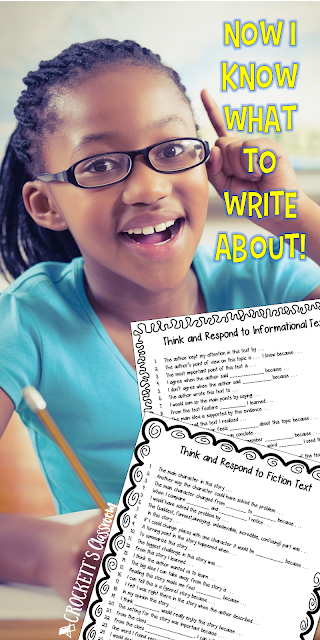Picture this: You have your centers set up and your small group lessons are planned. The kids are working on their reading and literacy center tasks. You're focused on your small groups. You give yourself a pat on the back because everything is running so smoothly!
At the end of the week, you collect their literacy folders, which hold all their written work for the week, and their learning journals. When you sit down to go through the folders and journals you notice the written work is uh . . . let’s say, not up to the quality you expect. You wonder, “What were they doing all week?!”
Even if you’ve taught the routines and your literacy block runs smoothly unless you have high expectations and a way to keep kids accountable, what’s the point? That’s when center and reading tasks turn into busy work, and nobody has time for that.
I have a few ideas for ways to hold students accountable for the high expectations you set. I firmly believe that expectations are pointless without the accountability. I’ve divided the tips or suggestions between the three reading tasks and three center tasks that I use during my literacy block. Every classroom is different, so feel free to take, use, or modify any of them to implement in your classroom.
One other note, I've never found anything that works every year with every class. Each group of students is different. The accountability checks I did one year might not work the following year. As with everything else, teaching is about making adjustments for the students’ needs.
My goal was always to foster independence and a habit of doing their best on every task. Once the expectations and accountability checks were established, I was able to focus more on the content of their work.
1. Journal Response
One of the most difficult literacy tasks to check is independent reading. How do you know if they are really reading? One way is to have students write a short journal entry. The entries can be a short summary of what they read, a topic chosen from a list, or focus on a specific skill. For example: Write about the characters and how their words or actions affected the plot. You need to do a lot of modeling of the exact format you expect for the journal entry.
Here's a free set of reading response stems you can use in your classroom.
Here's a free set of reading response stems you can use in your classroom.
2. Accelerated Reader (AR) Quiz
I like this program for one reason -- it held my students accountable for their independent reading. It is NOT a great way to check a higher level thinking skills, but it is a good way to quickly and easily know if a student has read a book. I talked to each student at the beginning of every quarter to set goals. The reports made it easy for us to check progress.
3. Buddy Check-in
In a couple of my centers, students read with a partner. Part of the expectation is that they keep each other on task. I choose the students for each partnership carefully so I can set them up for success. In my fluency center, the students write a comment or two about their partner's reading and this serves as the check. If there is a problem in the partnership, students can talk to me about the issue and I can help them work on a solution. Buddy Check-in is also a way to recognize students who are focused, polite or helpful buddies.
4. Discussion Monitor
One of my reading centers has groups of 2-4 students reading an assigned text. As they read, they stop and chat about the text. The discussion is focused on a reading skill we've been working on in our whole-class lessons. Each student has a thinkmark with reminders about the skill. It helps them stay focused on the purpose of the discussions. One student can be assigned the discussion monitor for the day or for the week. The monitor makes sure the readers stay on topic and prompt students to give complete and thoughtful comments. At the end of the daily discussion, the monitor fills out a simple rubric/checklist about the group members' participation.
5. Switch and Check
One of my favorite ways to hold students accountable for centers with a written task was to assign them a checking partner. When both students finish the task they switch papers and use an answer key to check the work. This worked well for written center work because I rarely took grades on this work.
6. Star Student
I've seen this idea used in different class situations. I like to use it during literacy block because it's an easy way to give recognition to students who are doing what they're supposed to be doing. Sometimes I was looking for a student who had over-all good behavior during our literacy block. But sometimes we had a focused behavior for the day or week. During literacy block I make a mental note of students who are on task, working quietly, keeping their area neat and organized, helping others, etc. At the end of the block, I would choose one student to recognize as the Star Student for the day. I would write the student's name on a small display at the front of the room. Sometimes I would put the name in a jar for a drawing at the end of the month.
Click on the image to download this Star Student sign you can use in your classroom!


















